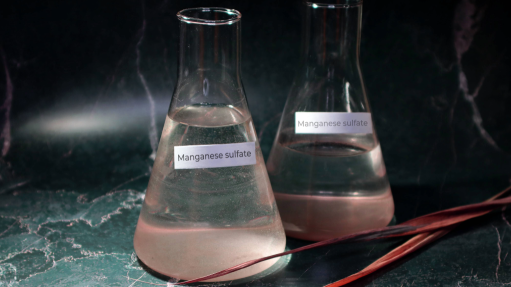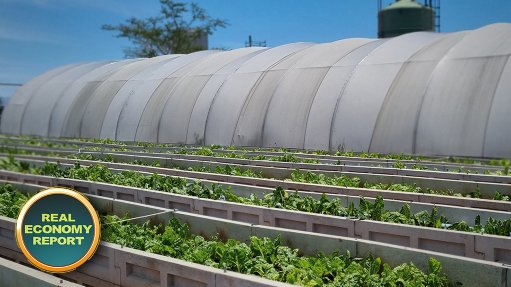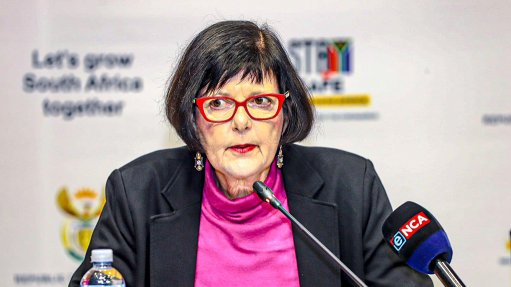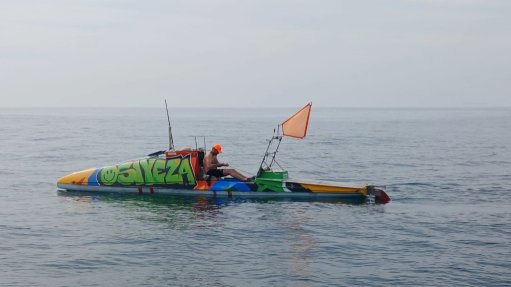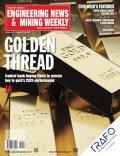University drones research facility receives R11m grant


UFS rector and vice-chancellor Professor Francis Petersen signs the grant with Hans Merensky Foundation president Dr Khotso Mokhele
Research charity the Hans Merensky Foundation (HMF) president (and former University of the Free State [UFS] chancellor) Dr Khotso Mokhele recently signed an R11-million five-year research grant agreement with the UFS to expand the Merensky group for Aerial Geological Image Classification (MAGIC) at the university.
This builds on the HMF’s presence at two South African universities – Stellenbosch University (for forestry research) and the University of Pretoria (for avocados).
The grant to MAGIC will be used to support research programmes, including student bursaries, staff salaries, capital expenditure acquisitions such as high-performance computers, and the drones the project makes use of, says UFS Department of Geology lecturer Dr Martin Clark.
According to him, the group aims to develop drone-based geological imaging in South Africa, with specific attention to mineral and groundwater exploration endeavours.
According to Mokhele, Dr Hans Merensky – whose legacy is facilitated by the HMF – was one of the most influential geologists in South Africa. He discovered, among others, deposits of gold, platinum, diamonds, phosphates and vermiculite.
After several decades of operating in the geological sciences and with his knowledge of soil health, Merensky became a noteworthy conservationist and played a key role in the establishment of the country’s agricultural practices.
“The main objective of the HMF is to promote and assist in the development of the resources of South Africa and neighbouring territories – particularly such natural resources as soil, water, flora and fauna,” says Mokhele.
He adds that the HMF also aims to promote the health and welfare of South Africans and citizens in neighbouring countries, more specifically, through research, experimentation and demonstration and through the correlation and application of scientific knowledge.
“You have to take the knowledge and translate it into demonstration of what that knowledge can do, and then apply it,” says Mokhele.
The grant is also evidence of the generosity of Merensky’s, who was quoted as saying, “[South Africa] has given to me so much, that I am only too happy to be allowed to help it to develop in some way, and I am grateful to be able to give back to it a fraction of what it has given to me.”
UFS rector and vice-chancellor Professor Francis Petersen says MAGIC is an “exciting project” as research and the development of the next generation of scientists are critical. “This is part of our mandate. This project is one of those catalysts for the development of what the mandate is all about – research output, capacity building, and impact through our students and our research in a broader society.”
He adds that the UFS is highly committed to the MAGIC project and will ensure it receives the maximum support to make it a success.
“What makes me excited about this project is how the research impacts society. This includes developing geological imaging capacity in South African geologists with a Fourth Industrial Revolution skillset, ensuring that they remain competitive in a global market,” says Clark.
He is also of the opinion that many industries will be able to see for themselves how this technology can improve their businesses. “Drone-based geological imaging can be quicker, cheaper and safer for collecting much of the initial information that informs more expensive exploration processes, such as drilling.”
Additionally, Clark says drones are non-invasive and have little to no impact on the environment during data collection. “Drones can also, in terms of safety, collect data from unstable rock walls – historically, geologists would have to take those measurements themselves, with rock falls resulting in a significant number of deaths every year.”
He explains that drone-based imaging has supported research initiatives in the Vredefort Dome heritage site. “Using drone-collected high-resolution images of meteorite impact melt rocks, along with field observations of how much and where foreign rock components were contained within (clasts), we could make a case for turbulent flow in the migration of impact melt material within the deep crust.”
Clark adds that three papers are currently under way, each predicated on drone imagery that enables new insights into geological processes or the ability to digitally translate geological information inside and outside the classroom.
The growing research group, with Clark as the principal investigator, consists of one PhD student, two master’s students, and two honours students, with several postdoctoral research fellows to follow soon.
Comments
Press Office
Announcements
What's On
Subscribe to improve your user experience...
Option 1 (equivalent of R125 a month):
Receive a weekly copy of Creamer Media's Engineering News & Mining Weekly magazine
(print copy for those in South Africa and e-magazine for those outside of South Africa)
Receive daily email newsletters
Access to full search results
Access archive of magazine back copies
Access to Projects in Progress
Access to ONE Research Report of your choice in PDF format
Option 2 (equivalent of R375 a month):
All benefits from Option 1
PLUS
Access to Creamer Media's Research Channel Africa for ALL Research Reports, in PDF format, on various industrial and mining sectors
including Electricity; Water; Energy Transition; Hydrogen; Roads, Rail and Ports; Coal; Gold; Platinum; Battery Metals; etc.
Already a subscriber?
Forgotten your password?
Receive weekly copy of Creamer Media's Engineering News & Mining Weekly magazine (print copy for those in South Africa and e-magazine for those outside of South Africa)
➕
Recieve daily email newsletters
➕
Access to full search results
➕
Access archive of magazine back copies
➕
Access to Projects in Progress
➕
Access to ONE Research Report of your choice in PDF format
RESEARCH CHANNEL AFRICA
R4500 (equivalent of R375 a month)
SUBSCRIBEAll benefits from Option 1
➕
Access to Creamer Media's Research Channel Africa for ALL Research Reports on various industrial and mining sectors, in PDF format, including on:
Electricity
➕
Water
➕
Energy Transition
➕
Hydrogen
➕
Roads, Rail and Ports
➕
Coal
➕
Gold
➕
Platinum
➕
Battery Metals
➕
etc.
Receive all benefits from Option 1 or Option 2 delivered to numerous people at your company
➕
Multiple User names and Passwords for simultaneous log-ins
➕
Intranet integration access to all in your organisation







